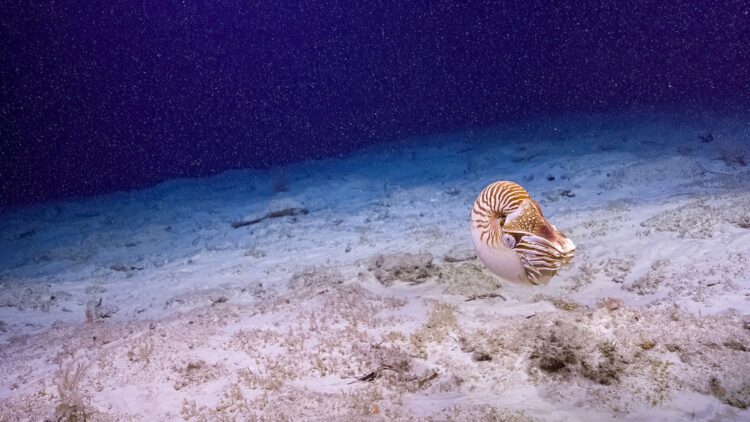In a remarkable scientific breakthrough, a research team aboard the E/V Nautilus has spotted a rare sea creature, one that has remained virtually unchanged since the era of the dinosaurs. This discovery—the culmination of 15 years of research and more than 1,000 remotely operated vehicle (ROV) dives—offers profound insights into marine biology and deep-sea ecosystems.
The sighting of this ancient organism not only represents a milestone in scientific exploration but also highlights the intriguing resilience of life in some of the ocean’s most isolated habitats.
Nautilus belauensis: A momentous encounter
The historic sighting of Nautilus belauensis (also known as Palau nautilus) took place during a recent dive in the German Channel in Palau, where the team successfully captured video footage of four of these elusive creatures.
The excitement of encountering the nautilus evoked a sense of childlike joy among the crew, who had eagerly anticipated encountering this extraordinary age-old species.
The Nautilus belauensis is notable for its stunning, spiral-chambered shell and behavioral traits that have remained unchanged for millions of years. In fact, this marine organism serves as a direct connection to the distant past, with fossils dating back over 500 million years, making it one of the most primitive cephalopods still in existence.
Nautilus belauensis: A “living fossil”
The nautilus has been hailed as a “living fossil,” showcasing a body structure and characteristics that have remained mostly the same since the time that dinosaurs once roamed the entire planet, thus highlighting its evolutionary success.
“It was surreal to encounter an animal whose body plan and behaviors have barely changed since the age of the dinosaurs,” says Samantha Wishnak, the expedition leader and operations coordinator at the Ocean Exploration Trust (OET).
Utilizing a gas-filled shell for buoyancy, this enables the nautilus to navigate the depths of the ocean with ease in a manner akin to submarines.
Despite being a highly mobile marine predator, this creature is classified as Near Threatened by the IUCN Red List, emphasizing the urgent need to carry out conservation efforts for this and other deep-sea species, particularly those inhabiting extremely vulnerable habitats.
The significance of future deep-sea exploration
The E/V Nautilus has leveraged advanced technological tools to enhance deep-sea exploration. The ROVs used during the expedition have transformed our ability to observe marine life, allowing scientists to document creatures that remain elusive. Live streaming technology enables viewers worldwide to witness the excitement of momentous discoveries in real time.
In addition to the Palau nautilus, the expedition also documented various marine life and geological features within the German Channel, showcasing the rich ecosystems present in these unexplored waters. With the aid of institutions such as the Scripps Institution of Oceanography, the OET continues to expand the frontiers of marine research, contributing vital data that will inform future conservation efforts.
The sighting of the nautilus is a huge step forward in our understanding of deep-sea ecosystems. It raises critical questions regarding the impact of human activities on these fragile environments and emphasizes the importance of balancing exploration with conservation. As researchers continue to delve deeper into the mysteries of the ocean, it is essential to remain aware of the delicate habitats that sustain such ancient species.
The Nautilus belauensis serves as a living testament that the ocean is still full of secrets waiting to be revealed. As exploration efforts advance, there is hope that these discoveries will foster greater awareness and action toward safeguarding our seas’ unique biodiversity for generations to come. The thrill of discovery and the allure of the unknown remain as compelling today as they were at the first dawn of ocean exploration.

